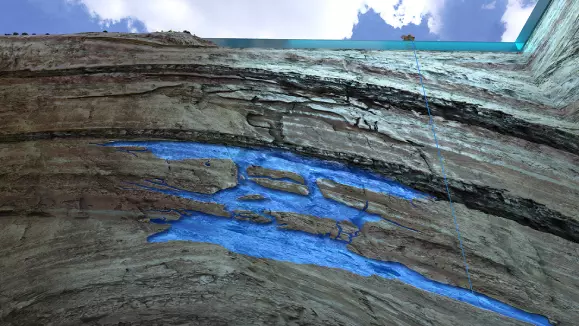CO2, or carbon dioxide, is one of the main greenhouse gases linked to human and industrial activities. The increase in its concentration in the atmosphere accelerates climate change. Contained in industrial flue gas, it is generated during the chemical processes of producing certain materials such as steel or cement. It also comes from energy production resulting from the combustion of carbon components of fossil and organic origin. This is especially the case when we transform household waste or non-recyclable waste into heat and electricity. That's why it's particularly important to capture this carbon dioxide to prevent its release into the atmosphere. Depending on local situations, it is then possible to use it or store it sustainably.
What are the challenges related to CO2 capture?
Whether for our municipal, commercial or industrial clients, reducing carbon dioxide emissions is an environmental, technical, but also economic challenge. Indeed, for example, local authorities, who own household waste incinerators, are at high risk of being taxed on their carbon emissions in the near future. We intervene to assist them in finding optimal solutions to reduce their emissions or offset them.
- Source reduction by limiting the amount of waste, particularly plastics;
- Energy optimization at the territorial level: production, distribution and consumption;
- Capture of residual emissions;
- Utilization or storage of the captured CO2 optimized according to the context and local constraints.
As a player along this value chain, Veolia has recognized expertise in assisting municipalities and industries in designing and implementing the best environmental, technical, regulatory, and economic strategies.
Reducing CO2 emissions has 4 main focuses:

Our solutions for capturing, utilizing and storing CO2
Carbon capture
Among the existing CO2 capture processes, the Absorption method is the most commonly used.
The incineration flue gases are conveyed to the capture unit. In an absorption column, CO2 molecules adhere to a liquid chemical solvent. Then, a thermal process separates the CO2 and regenerates the solvent for reuse in a loop. The carbon dioxide can then be stored in deep geological formations or used as a raw material in the manufacturing of industrial products.
There are other technologies available, and Veolia will support you in implementing the most suitable one for your specific contex.
Carbon dioxide valorization
Carbon dioxide can be used in various ways in industrial production processes. It is involved in the manufacturing of chemical, biological, or industrial compounds, such as construction materials.
Another promising way of valorization: combined with hydrogen, it also allows the production of synthetic and sustainable fuels, known as e-fuels; and opens an alternative to fossil fuels to meet the challenges of maritime and air transport. This valorisation path is particularly well suited to the large volumes contained in incineration flue gases.
Regarding household waste incinerators flue gases, it is estimated that over 50% of the CO2 content is biogenic. Therefore, incorporating our expertise in the fields of energy and waste, we are particularly well positioned to valorize this biogenic carbon.
Carbon storage
Once compressed, CO2 is transported to its storage location. These rock reservoirs can be depleted hydrocarbon reservoirs or saline aquifers that offer large storage capacities. The CO2 is then injected deep into the ground, filling the pores of the reservoir rock until it reaches the impermeable geological cap. Trapped, it will remain sequestered in the rock for thousands of years. The safety of the storage is subsequently monitored in compliance with the strictest environmental standards.
In terms of innovation, geological storage of CO2 from incineration flue gases offers two concomitant advantages:
- The fossil CO2 component is canceled out, as it is permanently buried;
- The biogenic part gives access to carbon abatement credits, known as CDR (Carbon Dioxide Removal) credits, which can be traded to finance these installations or generate so-called "negative emissions".
- You benefit from personalized advice and support that takes into account all of your constraints, including legal and regulatory aspects;
- You have access to the best strategies available in the market;
- We assist you in finding the best outlet for your carbon dioxide, with an advantageous and sustainable business model;
- You benefit from non-negotiable safety requirements;
- You benefit from the expertise of Veolia and its partners across the carbon value chain, from the point source to their recovery, storage or offsetting;
- Thanks to its local presence and network of partners, Veolia has a wide range of technologies and solutions that can be adapted to your specific situation, with its outlets and constraints, including regulatory.


